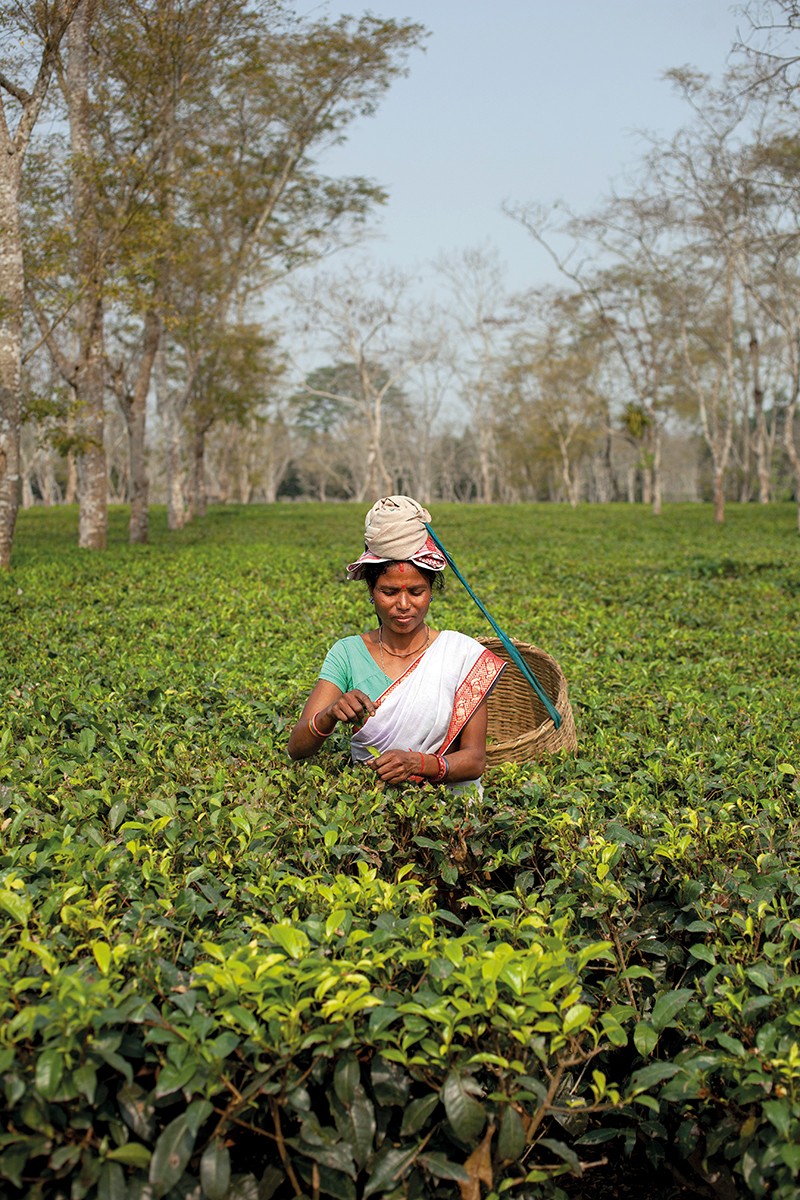Dr. Lopamudra Priyadarshini
A journey by the countryside is blissful and soothing for the mind and heart. Oh! what beauty embellishes the lush green or ripe yellow crops swaying in rhythm as the breeze blows. It’s a scenic beauty straight from the fairytales.
Women bending and tending to the crops either sowing, harvesting, or caring, is such a color full sight. As if the heavenly script by the Master Lord. A walk on the hills of Darjeeling or Ooty on those carved hilly paths is idyllic. Bamboo baskets hung on the shoulders of women, plucking tea leaves is a spectacle to watch. The beautiful-looking yellow mustard flowers in the fields across the countryside in Punjab are timeless.
Apple orchards and strawberry trees on the mountain terrains at Shimla have a magnetic effect on tourists. Most of the beautiful and scenic beauty of nature is as a result of back-breaking, long hours of sweating in the fields by women farmers, toiling hard to tend to Mother Earth and produce agricultural yield.
Women constitute nearly 75% of the full-time agricultural workers in farms in India. Female farmers contribute around 60 to 80% of India’s food basket(OxfamInternation,2021).
Yet, they go unnoticed.
The hype regarding women empowerment would be limited to publications and decibels in the speeches of politicians and researchers if the socio-economic empowerment does not touch the lives of millions living at the edge.
Those whose day breaks before dawn and ends much after dusk. These are the voiceless women farmers of India, who suffer due to gender discrimination, patriarchal culture, and the apathy of a system lacking the social and political will to change their lives.

Migration has led to a large exodus of men from the countryside, flocking to urban cities in the hope of better livelihood. This leaves the women folk back in the villages. Women farmers carry out domestic responsibilities like cooking, washing, cleaning at home and also double it with long hours of tough grind in the fields with no income, mostly if they work in their family farms. This is due to the noninheritance of land by the girl child as a social practice in India.
The economic benefit of their hard labor goes to the hands of men. Those women farmers who work as farm laborers in the farms of rich farmers are left with no alternative, but to accept the subsistence pay, much less than their male counterparts in similar jobs.
Since the lands are mostly registered in the names of men, the women farmers have negligible accessibility to bank loans. Hence scaling up their business or having economic independence is beyond their reach.
Hence they do not exist in the government record books as farmers and not able to take advantage of government schemes. It is deplorable that the people who contribute maximum to the family income, food, and the country’s food platter are impoverished, harassed with abysmal socio-economic disparity.
This weakened socio-economic condition of women farmers makes them vulnerable to domestic violence and subjugation of their basic human rights many times. It is one of the main reasons for the women farmers to continue living in the dungeon of illiteracy, oppression by the men at their homes, and inability to assert their rights as citizens of this country.

However, there is a glimmer of hope from various corners of India. Whether it is 65 years old Kamala Pujari from the distant tribal district of Odisha, wearing her tribal dress wear, walking on the red carpet of Rashtrapati Bhavan to receive Padma Shri for her contribution to agriculture upliftment in Odisha or ‘Kishan Chachi’ as Rajkumari Devi is popularly called at her village Anandpur in the Sariyah block of Muzzafarpur is making waves of change in the lives of women farmers and agriculture sector.
Located in a zone that is perpetually under the grips of drought and agrarian crisis, in a state which has a high rate of farmer suicides, the village of Hinlajwadi in Osmanabad Tehsil of Maharastra has a different story unfolded.
The credit goes to the determined and persistent efforts of the women farmers who took the massive challenges that nature and patriarchy posed and became triumphant in their struggle.
The women bonded over the common misery in their lives and took up initiatives to save their families and children.
They joined hands, changed the attitude of men, met the administrative functionaries, worked on their own family fields alongside the men, grew food for their family meals as well as started their businesses, and are making a profit.
Today there are over 200 SHGs in their village, making a turnover of Rs 1 crore. Today women are not only working on their farms but some have opened ventures such as dairy farming, poultry farming, sewing, and beauty parlors too.

Surprisingly, the menfolk after initial dissent gave up against the determined women’s power and today happily carry out the role shift of cooking and tending to their families as women of the village are walking on the roads of empowerment and self-realization.
Hence an indomitable spirit in women farmers, uniting for their rights, making efforts to enhance connectivity with the administrative machinery, market, and polishing their skills would help them to march ahead.
The political will needed to ensure that women farmers assert their rights is indispensable. Through the framing and implementation of appropriate schemes, accessibility mechanism, collaboration, and strict guidelines to banks in assisting women farmers’ access loans, educating women and men through constructive and joint efforts of bureaucrats and village panchayats, the Government of India as well as state governments can play a strategic role in augmenting the socio-economic empowerment of women farmers.
The NGOs pitching in for creating awareness, spreading education, changing patriarchy attitude in the rural areas with the help of gram panchayats would be real fuel to increase momentum. The lakhs of SHGs in the nook and corner of India have a very significant role to play.
In a country like India, where leakage in the system is pervasive, it is necessary for the government to tighten the leak valves and infuse tremendous accountability, which needs support by the judicial mechanism too.
The dream of women empowerment and a self-sufficient nation will be realized and golden letters of accomplishment will go down into the pages of Indian history for future generations to be proud of if the emancipation of women farmers will is achieved with conviction.
“Ending gender inequity is not only the right thing to do. It is the smart thing to do because FAO tells us that giving women farmers the access to resources they need would lift up to 150 million people out of hunger”. Ertharin Cousin [Former Executive Director of the World Food Programme]

